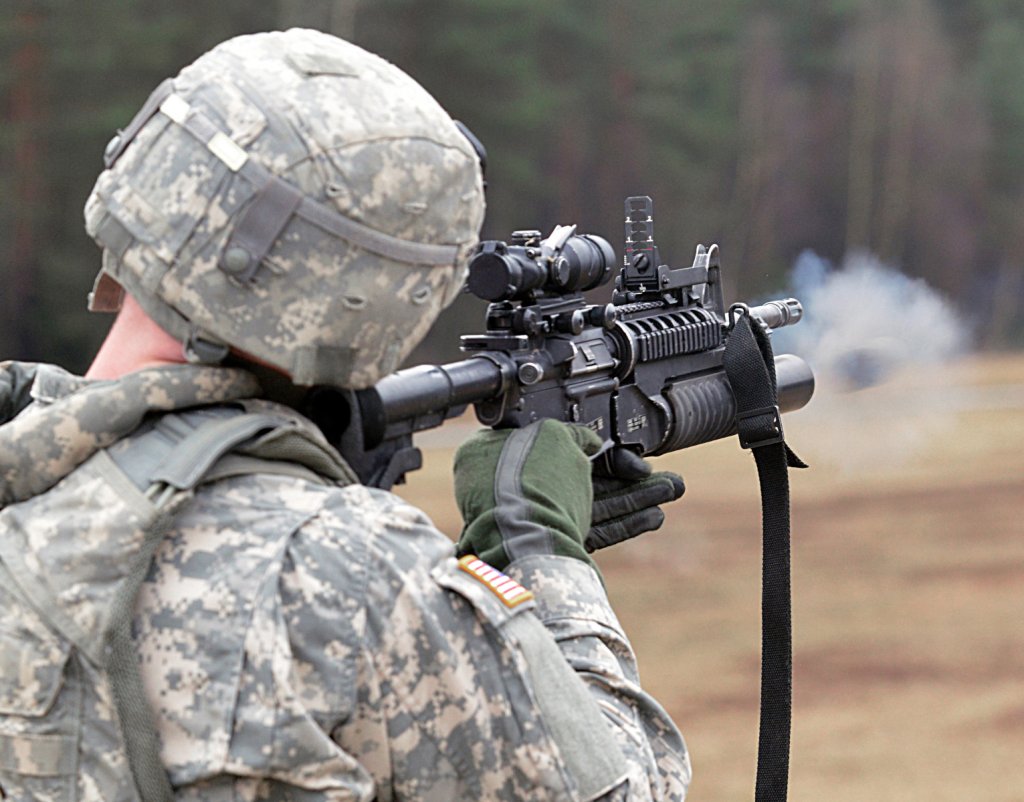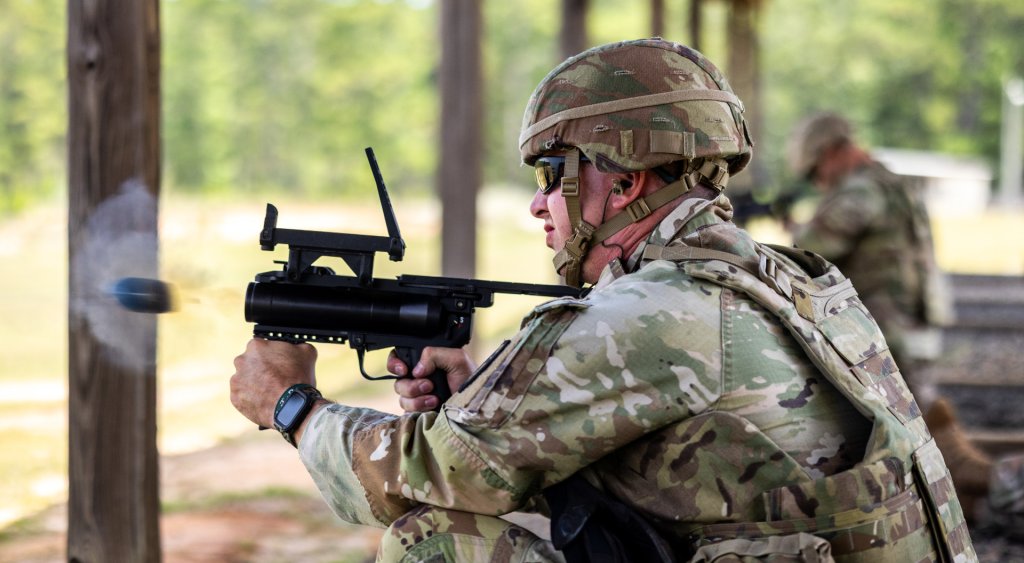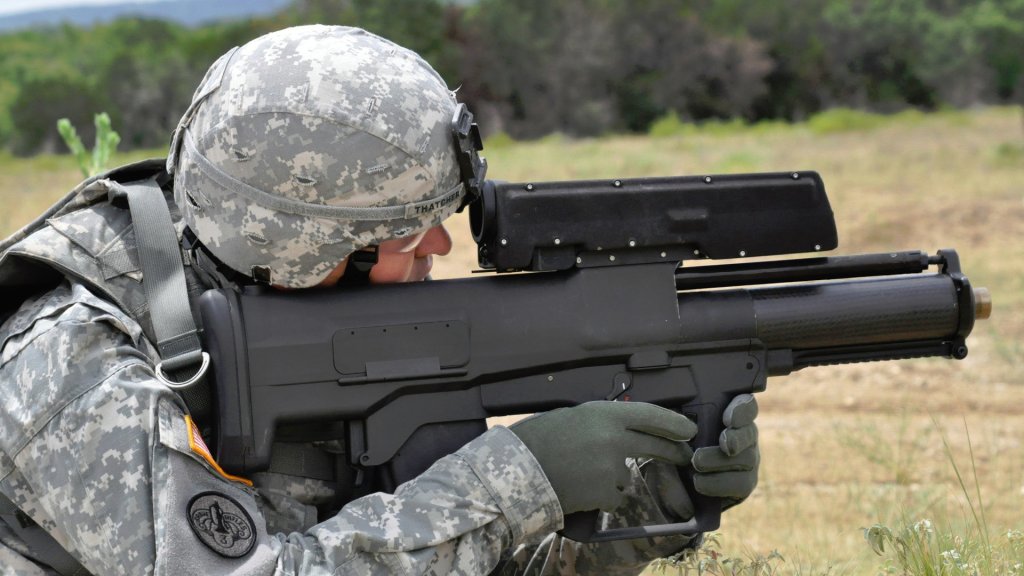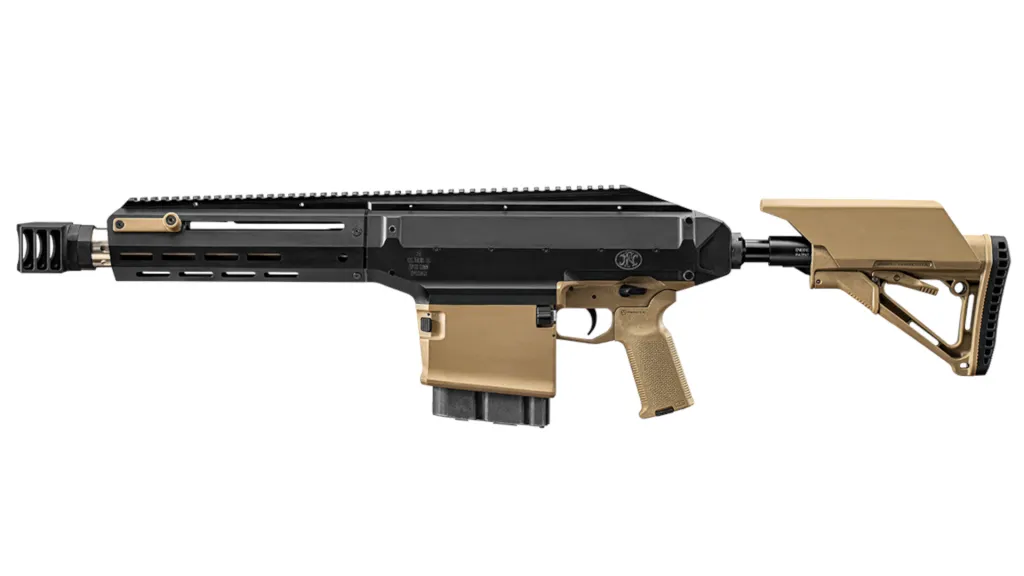The U.S. Army has handed the American division of the Belgian gunmaker Fabrique Nationale (FN) a contract for further development of its semi-automatic Multi-Purpose Tactical Launcher-30mm (MTL-30). This comes as the service is still pushing to acquire a new Precision Grenadier System (PGS) that will give soldiers a new way to engage a wide range of targets, including lightly armored vehicles, enemy personnel behind cover, and drones in the sky.
FN America announced yesterday that it had secured what it called a Prototype Project Opportunity Notice (PPON) contract, valued at $2 million, for work on the MTL-30. The Army first put out the PPON in relation to the PGS effort in February. The service described it as a call for prototypes to support a “risk reduction effort separate from the Precision Grenadier Program of Record with the goal of developing technologies associated with the current capability gap.”

“This program is a U.S. Government priority with the shift in modern warfare and engagements, and FN is honored to be selected to develop this new, innovative solution,” Mark Cherpes, President and CEO for FN America, said in a statement. “Once developed and implemented, this weapon system could radically change future battlefield strategies. It will offer new capabilities at the squad level and upgraded tactical options, giving the warfighter a more effective system.”
“The FN MTL-30 shoulder-fired launcher can engage in close-quarter warfare, defeat targets in defilade, and engage unmanned aerial systems (UAS). It could also be networked with FN remote weapon stations to create a multi-layered defense against UAS,” John Bungard, Senior Director of Military Development Programs at FN America, also said. “Providing solutions that can counter multiple threats is critical for future battlefield engagements. We are excited that the Army is interested in maturing our PGS solution. We are fully committed to this system and its development.”
Though not explicitly mentioned in FN America’s release today, the MTL-30 looks very clearly to be an evolution of a previous design called the PGS-001. The Army picked the PGS-001 as one of two finalists in the xTechSoldier Lethality challenge to “showcase their innovative concepts for a Precision Grenadier System” last year. The service subsequently declared the other finalist, the Squad Support Rifle System (SSRS) from Barrett Firearms and MARS, Inc., as the winner.

Like the PGS-001, the current MTL-30 has the general outward appearance of an oversized assault rifle. The semi-automatic weapon is 35 inches long and weighs around 10 pounds. It feeds 30mm cartridges from three or five-round detachable box magazines.
The MTL-30 has a Picatinny-type accessory rail along the top, as well as additional accessory attachment points on the handguard utilizing the increasingly popular M-LOK system developed by another American firm, Magpul. No particular accessories are shown in the images FN America has released so far. The Army has not yet publicly stipulated the need for the future PGS to make use of any particular optics or other attachments. A computerized sighting system of some kind would be needed to make the most optimal use of the weapon.
“Real time soldier feedback has led to a prototype that is far more user-friendly, incorporating a footprint users will be familiar with due to the M4-style controls, grip and buttstock,” according to FN America’s release. “The system features a soft shooting launcher with low-felt recoil, enabling rapid target engagement with effective payloads from an extremely controllable system.”

More specific details about the rounds the MTL-30 fires are currently limited. PGS requirements that the Army has previously released have called for a family of ammunition that at least includes a “Counter Defilade Round” capable of engaging personnel behind hard cover and a companion round for use in training. The service has also expressed a desire for armor-piercing, dedicated anti-drone, and “Close Quarters Battle” cartridges, the latter of which could refer to some kind of buckshot-like canister round.
FN America has said the weapon has an effective range of 1,640 feet (500 meters), which is another known PGS program requirement, and that the ammunition it uses flies along a flat trajectory. The Army’s existing M203 and M320 grenade launchers both fire 40x46mm rounds that travel along a trajectory with a very pronounced arc. A flatter trajectory can be more advantageous for engaging certain target sets.
It is worth noting here that the Army primarily fields the M203 and M320 as under-barrel attachments for existing M16/M4-series guns, though the latter can also be employed in a stand-alone configuration. The maximum effective range of the M203 and M320 when firing typical high-explosive rounds is 1,148 and 1,312 feet (350 and 400 meters), respectively.


“The PGS will be a man portable integrated weapon system that enables precision engagements to destroy personnel targets in defilade and in the open with increased lethality and precision compared to the legacy M203/M320 grenade launchers,” according to another Army PGS contracting notice from February 2023. “The PGS will provide overmatch to comparable threat grenade launchers in near peer formations in future operating environments (jungle, urban, woodland, subterranean, desert, day/night/obscured). The PGS is envisioned to consist of a weapon, a fire control, and a suite of ammunition which enables the user to engage targets in defilade/cover, hovering UAS targets, conduct door breaching, engage close combat targets, and light armored targets.”
What timeline the Army might be currently targeting to start actually fielding PGSs is unclear. The program traces back to at least 2020.
Between the mid-2000s and the late 2010s, the Army had also pursued the development of a very similar weapon, designated the XM25, and known variously as the Individual Semi-Automatic Airburst System (ISAAS) or Counter-Defilade Target Engagement (CDTE) System. Also nicknamed “The Punisher,” the XM25 had itself evolved from next-generation infantry weapon efforts dating back to the 1990s.

A key feature of the XM25 was the advanced (and costly) programmable 25mm airbursting ammunition that it fired. The weapon’s computerized fire control system used a laser range finder to determine the distance to the target and then set the round to detonate at the optimal point in its flight.

The Army announced in 2018 that it had canceled work for good on the XM25, citing the weapon’s 14-pound weight and its physical bulk, as well as rising costs.
As has already been noted, FN America is also not the only company already angling to supply the Army with a new advanced grenade launcher. In addition to SSRS from Barrett and MARS, the American subsidiary of German firm Rheinmetall has been developing the Highly Advanced Multi-Mission Rifle (HAMMR), and Northrop Grumman and Colt are working together on their own as-yet-unnamed design.
The Northrop Grumman-Colt weapon is chambered to fire 25mm rounds, and you can read more about it overall here.

American Rheinmetall’s HAMMR is a version of its Squad Support Weapon 40 (SSW40), which was first unveiled in 2022. The SSW40 fires 40x46mm cartridges that are similar to the ones used in the M203 and M320, but have a higher muzzle velocity and, by extension, maximum range.

American Rheinmetall had also competed in the xTechSoldier Lethality challenge, along with two other companies, Knight Technical Solutions (not to be confused with Knight’s Armament Company) and Plumb Precision Products. At the time of writing, whether any other firms have received PPON contracts related to PGS is unknown.
The announcement of the PPON contract does show that the Army is continuing to lay the groundwork for a new semi-automatic grenade launcher that it hopes will give soldiers a major boost in capability over the M203s and M320s they have now.
Contact the author: [email protected]
